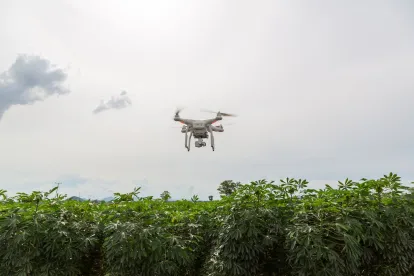New Drone Rule Requiring Remote Identification Taking Effect September 16
The Federal Aviation Administration’s (FAA) Remote ID Rule (Remote ID) is a regulation that requires all drones registered with the FAA to be capable of broadcasting their identification and location information in real time. This information can be received by other people through a broadcast signal, such as radar, radio, or cellular.
The purpose of Remote ID is to improve safety and security in the national airspace. By knowing the identity and location of drones in flight, other aircraft and ground personnel can be aware of their presence and take appropriate action to avoid collisions. Remote ID can also help law enforcement track down drones that are being used for illegal or unsafe purposes.
Starting September 16, 2023, most operators of unmanned aircraft systems (commonly known as “UAS” or “drones”) will be required to comply with the FAA’s new rule on remote identification. As drones continue to be utilized across a host of commercial and recreational endeavors, the FAA is encouraging all drone operators covered by the rule to comply and do their part to help increase the safety of UAS flight operations across the country.
Captured below are answers to key questions regarding Remote ID applicability and compliance:
Does Remote ID Apply to Me?
If you are a drone operator required to register your UAS with the FAA under Part 47 or 48 of Title 14, Chapter I of the Code of Federal Regulations, you must comply with Remote ID.[1] Generally, drones flown for recreation that weigh less than 0.55 pounds (or 250 grams) are not subject to the registration requirement and are therefore exempt from Remote ID. However, if registration is required, Remote ID’s requirements apply regardless of the purpose for which the drone is operated.
What Does Remote ID Require?
Remote ID requires that a drone broadcast certain elements from take-off to shutdown using a radio frequency that is available to most personal wireless devices within range of the broadcast, including:
- The identity of the UAS;
- The latitude, longitude, altitude, and velocity of the UAS;
- The latitude, longitude, and altitude of the controller;
- A UTC time mark; and
- For Standard Remote ID UAS, the emergency status of the UAS.[2]
These elements will be accessible to the public via third party apps that allow tracking of Remote ID-compliant drones operating within range.
How Do I Comply with Remote ID?
If you are required to register your UAS with the FAA, there are three ways to comply with Remote ID by:
- Operating a Standard Remote ID UAS, which has the broadcast capability required by Remote ID built in from the factory;[3]
- Operating a UAS retrofit with a Remote ID-compliant broadcast module;[4] or
- Only operating a UAS not compliant with Remote ID within line of sight in a FAA-recognized identification area.[5]
UAS operators are required to acknowledge their drone’s Remote ID capability upon registration with the FAA, and existing operators are required to update their registration to indicate Remote ID capability for already-registered UAS through FAADropZone.
[1] 14 CFR 89.101.
[2] 14 CFR 89.305, 14 CFR 89.315.
[3] 14 CFR 89.110.
[4] 14 CFR 89.115.
[5] 14 CFR 89.115(b).




 />i
/>i

